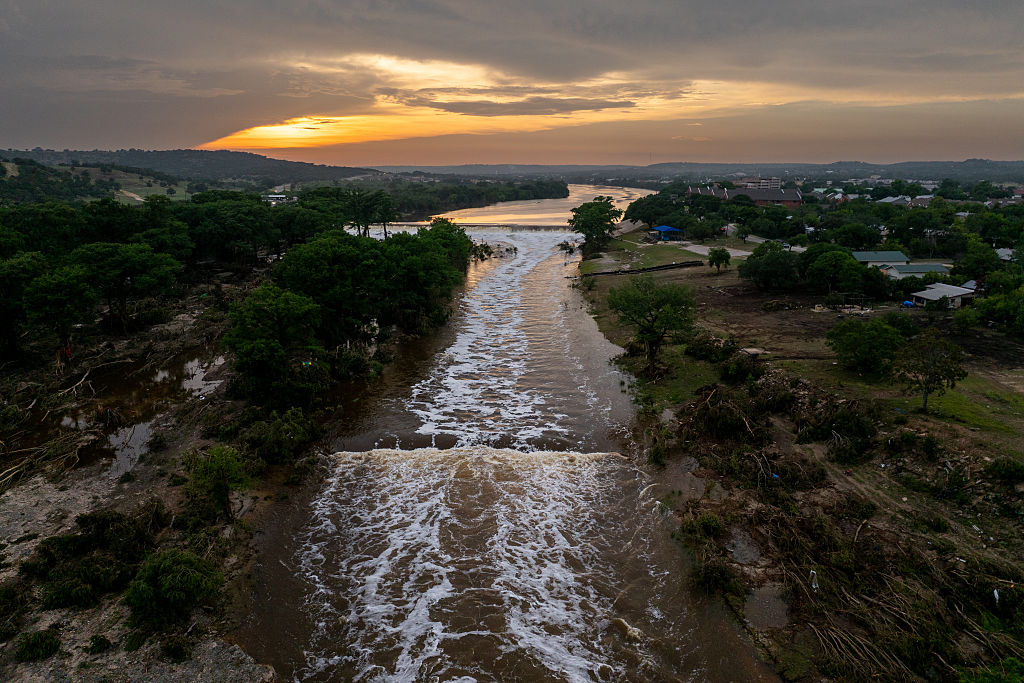Bail out? Tax hike? How will Kerr County pay for billions in flood damage?

In the weeks since the water has receded back into the banks of Texas Hill Country’s Guadalupe River, the extent of the damage from the deadly July 4 floods is coming into focus. It can be measured in lives — 136 people died, including 27 campers and counselors from Camp Mystic, and three remain missing. It can also be measured in the money it will take to fix the physical damage left behind — somewhere between $18 billion and $22 billion, according to AccuWeather.
The numbers raise the question: How can a small, rural community rebound from a storm that unleashed water “as heavy as a jumbo jet”? And how can that community afford it?
‘A financial puzzle’
Local officials in Kerr County, which bore the brunt of the floods that swallowed RVs into the river, snapped trees and wiped homes off their foundations, have said the lost value on local property appraisals may exceed $240 million. This will lead to a decrease in property tax revenue, which is how most counties sustain their budget.
John W. Diamond, senior director of the Center for Tax and Budget Policy at Rice University’s Baker Institute for Public Policy, said it’s a “financial puzzle you can’t really solve.”
“If you’re Kerr County, you’re stuck,” Diamond told Straight Arrow News (SAN). “You have the ability to increase your budget by a few million dollars, but you’re at the mercy of the government’s willingness to bail you out, both at the state and federal level.”
While some jurisdictions can tap into a rainy day fund when a disaster strikes, the bulk of recovery costs are usually shouldered by state governments and the Federal Emergency Management Agency (FEMA), experts said. But as FEMA shrinks, and as President Donald Trump continues to vocalize his expectations that state and local officials will cover more of the disaster response burden, it is unclear who will ultimately foot the bill and how costs will be covered.
Kerr County officials are already grappling with how to bridge the financial gap from the floods that upended their yearly budget planning meetings. Officials appealed to Texas lawmakers last week during a legislative hearing in Kerrville, asking for financial support from the state.
Can a small town tax its way out of disaster debt?
Outside of state or federal support, local officials could opt to take advantage of a Texas law that can temporarily raise property tax revenue — something Houston’s Harris County took advantage of last year, which helped erase a projected $130 million budget deficit.
Texas state law caps the property tax rate from being raised more than 3.5% from its existing amount each year. To exceed that rate, officials usually require voter approval. However, that cap does not have to apply during declared disasters. Commissioners Court — the Texas version of a county legislative body, composed of four commissioners and a county judge that acts as a CEO — makes the decisions around setting the tax rate.
Gov. Greg Abbott issued a disaster declaration for the floods on July 6. That declaration enables Commissioners Court to increase its general property tax revenue up to 8% without voter approval.
“We’re going to have to pay for this stuff,” Kerr County Judge Rob Kelly said at a recent meeting. “And FEMA will reimburse a lot of our emergency response costs. FEMA is here, and I’m thankful they’re here, but they’re slow.”
Kelly said the last time FEMA was involved in a county project, it took nearly three years for the county to be reimbursed.
At their July 14 meeting, commissioners voted to have the tax assessor calculate the county’s potential revenue if the property tax rate is increased. The move sparked confusion, spurring some residents to protest outside the county courthouse, because they believed their taxes would automatically increase.
Kerr County has not increased its property tax rates in recent years and instead has opted for a “No New Revenue Rate (NNRR),” which is a rate that generates a flat amount of revenue — in other words, no additional spending money for the jurisdiction. The only exception within the past five years was when local voters passed a bond election.
How will the future of FEMA affect Kerr County?
Kerr County Tax Assessor-Collector Bob Reeves, who emphasized that the tax rate is “not to pad the budget” and is for “unforeseen costs that have arisen out of the disaster,” told commissioners at an Aug. 4 meeting that every 1 cent above the NNRR will be a $39 increase for the average homeowner. He did not present findings about how much additional revenue could be generated if the county went forward with an 8% tax hike.
Samantha Montano, an associate professor of emergency management at Massachusetts Maritime Academy, said communities of any size struggle to find funds after a disaster. Rural communities like Kerr County particularly struggle because there “is an endless list of things that need to happen,” Montano told SAN.
“Recovery is difficult for everyone, but if you’re a community that has more resources, then it is slightly easier,” she said.
Montano said local jurisdictions are in an even more difficult position because of the turnover and uncertainty at FEMA.
FEMA has lost about a quarter of its full-time staff in the past six months, including 20% of the coordinating officers at the agency, who manage responses to major disasters, as well as the head of FEMA’s disaster command center, according to The New York Times.
“I would be extremely concerned about FEMA covering these costs,” Montano said. “It’s an open question right now as to whether FEMA will even continue to exist in the future, and also whether or not the federal government will be providing money for recovery, and if so, how much money, and in what capacity.”





